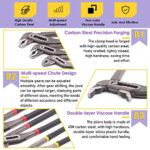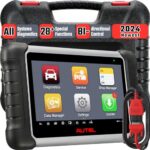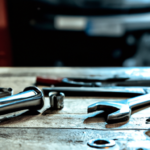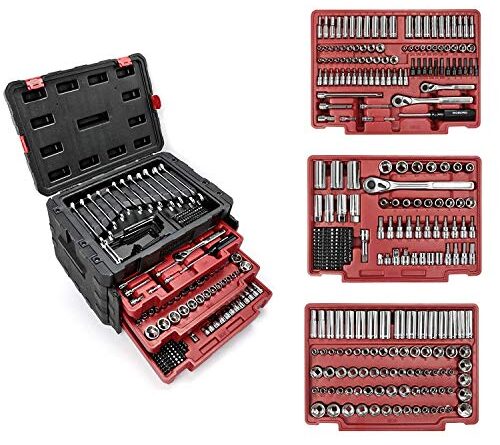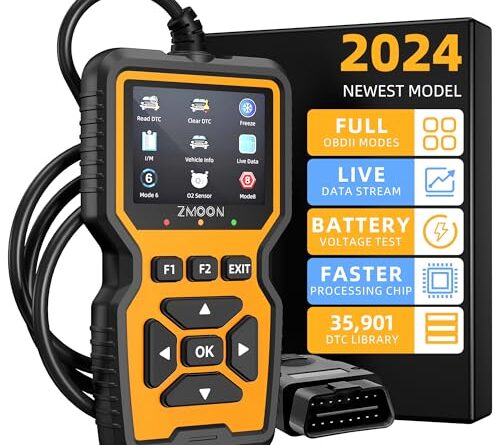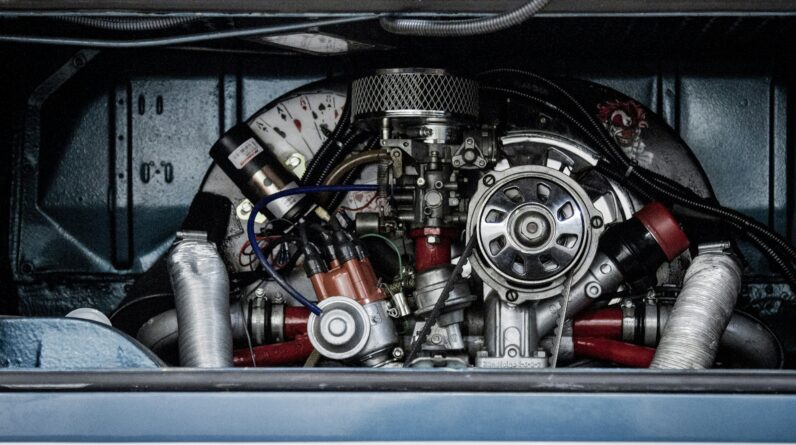
Disclaimer: This post may contain affiliate links. As an Amazon Associate, we earn from qualifying purchases.
When it comes to selecting the perfect wrench for your needs, you might find yourself overwhelmed by the array of options available. From adjustable to socket and open-end wrenches, the choices seem endless. But worry not, because in this post, we will guide you through the process of selecting the right wrench for any task at hand.
Whether you’re a DIY enthusiast or a professional mechanic, we’ve got you covered. So, let’s roll up our sleeves and dive into the world of wrenches!
Consider the Purpose
When choosing a wrench, it’s important to consider the purpose for which you will be using it. Different types of work require different types of wrenches, so it’s important to identify the specific task you need to accomplish.
Whether you’re working on a project at home or in a professional setting, the right wrench will make all the difference in getting the job done efficiently and effectively.
Identify the Type of Work
Before diving into the specifics of wrench types, it’s essential to identify the type of work you will be doing. Are you working on a simple DIY project at home or are you a professional mechanic? The nature of the work will determine the level of durability and quality required in your wrench.
For lighter tasks, a basic wrench may suffice, but for heavy-duty work, you’ll need a wrench that can withstand high levels of torque.
Determine the Sizes of Bolts and Nuts
Another crucial consideration is the size of the bolts and nuts you will be working with. Wrenches come in various sizes to accommodate different diameters, so you’ll need to determine the sizes you will most commonly encounter in your work.
It’s a good idea to have a set of wrenches in different sizes to ensure you have the right tool for the job. Being able to fit the wrench properly onto the bolt or nut helps prevent slipping and ensures a secure grip.
Evaluate the Torque Requirements
Torque is the twisting or turning force required to tighten or loosen bolts and nuts. When choosing a wrench, it’s important to evaluate the torque requirements of your work. If you’re working on a project with specific torque specifications, you may need a torque wrench that allows you to apply a precise amount of force.
In other cases, a basic wrench with adjustable settings may be sufficient. Consider the torque requirements of your work to ensure you choose the right wrench for the job.
Different Types of Wrenches
Wrenches come in a wide variety of types, each designed for specific purposes and tasks. Understanding the different types of wrenches available will help you make an informed decision and choose the right tool for the job. Let’s take a closer look at some of the most common types of wrenches:
Adjustable Wrench
An adjustable wrench, also known as a crescent wrench, is a versatile tool that features an adjustable jaw. This allows the wrench to fit different sizes of bolts and nuts. It’s a handy tool to have in your toolkit, especially if you encounter a range of sizes in your work. However, it’s important to note that adjustable wrenches may not provide the same secure grip as wrenches specifically designed for a particular size.
Combination Wrench
A combination wrench is a double-ended wrench that features an open-end on one side and a box-end on the other. This versatile tool allows you to tackle different types of bolts and nuts. The open-end is great for quick and easy access, while the box-end provides a more secure grip.
Combination wrenches are available in various sizes and are a staple in many toolboxes.
Socket Wrench
A socket wrench, also known as a ratchet wrench, is a popular choice for many professionals. It consists of a handle and a detachable socket that can be quickly and easily switched out for different sizes.
Socket wrenches often come with a ratcheting mechanism, allowing for continuous tightening or loosening without having to reposition the wrench. This makes them a convenient option for tasks that require repetitive motions.
Open-End Wrench
An open-end wrench, as the name suggests, features an open U-shaped end. This design allows for easy access in tight spaces where a closed-end wrench may not fit. Open-end wrenches typically have two different sizes on each end, providing versatility in a single tool.
They are especially useful for tasks in confined areas, such as working on plumbing fixtures or automotive components.
Box-End Wrench
A box-end wrench, also known as a ring spanner, is designed with a closed loop or ring on one or both ends. This design provides a more secure grip on the bolt or nut, reducing the likelihood of slippage or rounding off the edges. Box-end wrenches are great for applications that require higher torque or when working with tight or hard-to-reach spaces.
They come in various sizes and are a popular choice for both professionals and DIY enthusiasts.
Ratcheting Wrench
A ratcheting wrench combines the convenience of a socket wrench with the compact design of a traditional wrench. It features a ratcheting mechanism that allows for continuous tightening or loosening without having to lift and reposition the wrench.
Ratcheting wrenches are available in both open-end and box-end designs, making them versatile tools for various applications. They are particularly useful when working in confined spaces or when access is limited.
Torque Wrench
A torque wrench is a specialized tool designed to apply a specific amount of torque to a fastener. It is commonly used in automotive and industrial settings where precise torque specifications are critical. Torque wrenches typically have a built-in mechanism that clicks or releases when the desired torque setting is reached, helping prevent over-tightening or under-tightening.
If you’re working on projects that require specific torque values, investing in a torque wrench is essential for accurate and precise results.
Pipe Wrench
A pipe wrench is a heavy-duty tool designed specifically for working with pipes and rounded objects. It features an adjustable jaw that can be tightened or loosened to fit pipes of various sizes. The jaw has sharp teeth that dig into the pipe, providing a secure grip.
Pipe wrenches are commonly used in plumbing and mechanical applications and are known for their strength and durability.
Allen Wrench
An Allen wrench, also known as a hex key or hex wrench, is a specialized tool used for tightening or loosening hexagonal (six-sided) bolts and screws. Allen wrenches are available in various sizes and are typically made of hardened steel. They are widely used in assembling furniture, machinery, and bicycles. Their compact size and L-shaped design make them easy to use in tight spaces.
Crescent Wrench
A crescent wrench, also known as an adjustable wrench, is a versatile tool that features an adjustable jaw. This allows the wrench to fit different sizes of bolts and nuts. It’s a handy tool to have in your toolkit, especially if you encounter a range of sizes in your work. However, it’s important to note that adjustable wrenches may not provide the same secure grip as wrenches specifically designed for a particular size.
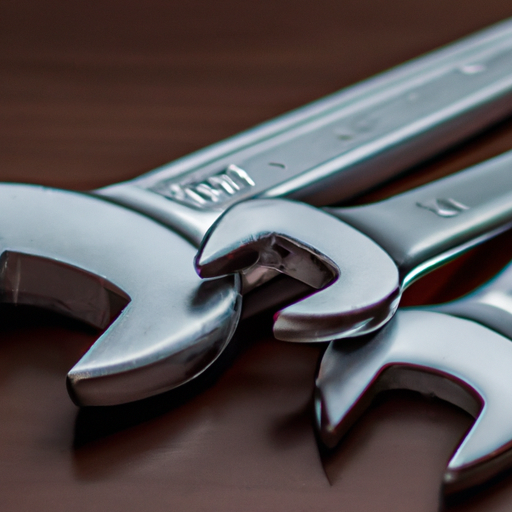
Consider Wrench Materials
When choosing a wrench, it’s important to consider the materials from which it is made. The materials used can impact the durability, strength, and overall performance of the wrench. Here are some common materials used in wrench construction:
Carbon Steel Wrenches
Wrenches made from carbon steel are strong and durable. They can withstand high levels of torque and are resistant to wear and tear. Carbon steel wrenches are a popular choice for both professionals and DIY enthusiasts due to their affordability and reliability. However, they may be prone to rusting if not properly maintained.
Chrome-Vanadium Steel Wrenches
Chrome-vanadium steel is a high-quality alloy that combines the toughness of carbon steel with the corrosion resistance of chromium and the strength of vanadium. Wrenches made from chrome-vanadium steel are incredibly durable, resistant to rust, and able to withstand heavy use.
They are often used in professional settings and are considered a top choice for those seeking reliable and long-lasting wrenches.
Alloy Steel Wrenches
Alloy steel is a combination of multiple metals, including chromium, nickel, and molybdenum. Wrenches made from alloy steel offer excellent strength, durability, and resistance to corrosion.
They are versatile and can handle a wide range of tasks. Alloy steel wrenches are often found in both professional and DIY toolkits for their reliability and longevity.
Stainless Steel Wrenches
Stainless steel is known for its high resistance to corrosion and rust, making stainless steel wrenches an excellent choice for applications where exposure to moisture or chemicals is expected. They are easy to clean and maintain, ensuring long-lasting performance.
Stainless steel wrenches are commonly used in marine, food processing, and chemical industries, as well as in environments where hygiene is crucial.
Ergonomics and Grip
In addition to considering the type of wrench and the materials used, it’s important to take into account the ergonomics and grip of the tool. A comfortable grip and ergonomic design can significantly enhance your experience while using the wrench and minimize fatigue. Here are some factors to consider:
Handle Design
The handle design of a wrench can vary greatly, so it’s important to choose one that suits your preferences and needs. Some handles have a straight design, while others may have a curved or contoured shape. Consider how the handle feels in your hand and if it allows for a comfortable grip. It’s also worth noting that some wrenches come with an ergonomic handle that is designed to reduce strain on the hand and wrist during extended use.
Comfortable Grip
A comfortable grip is crucial for ensuring a secure hold on the wrench. Look for wrenches that have a textured or rubberized grip, as these can provide better traction and reduce the likelihood of slipping. Some wrenches also feature a cushioned grip that adds an extra layer of comfort during use. Trying out different wrenches in person can help you determine which grip feels the most comfortable and secure for you.
Non-Slip Feature
Working with slippery or oily surfaces can make it challenging to maintain a tight grip on the wrench. Look for wrenches that have a non-slip feature, such as serrated jaws or teeth, that can dig into the surface and provide better traction. This will ensure that the wrench stays securely in place and prevents accidents or damage to the fasteners.
Handle Length
The length of the wrench handle can impact the leverage you have while using the tool. A longer handle can provide more leverage, making it easier to apply torque. However, a longer handle may also make the wrench bulkier and less maneuverable in tight spaces. Consider the balance between leverage and accessibility when choosing the handle length that best suits your needs.
Quality and Durability
When it comes to choosing a wrench, quality and durability are of utmost importance. Investing in a high-quality wrench will ensure that it lasts longer and performs reliably in the long run. Here are some factors to consider when evaluating the quality and durability of a wrench:
Brand Reputation
Choosing a reputable brand is an excellent way to ensure that the wrench you purchase is of high quality. Established brands often have a proven track record of producing reliable and durable tools.
Reading reviews and seeking recommendations from professionals or experienced DIYers can also provide insights into the quality and performance of different brands.
Construction and Strength
Inspect the construction of the wrench to ensure it is solidly built and free from defects or flaws. Look for wrenches that have a sturdy construction, with well-finished edges and smooth-moving parts.
Pay attention to the joint areas, such as the pivot point of an adjustable wrench or the ratcheting mechanism of a socket wrench, as these areas can be prone to wear and may affect the overall durability of the tool.
Coating and Protection
Some wrenches come with protective coatings or finishes that enhance their durability and resistance to rust or corrosion. Look for wrenches with a high-quality coating, such as chrome plating or a powder-coated finish. These coatings not only provide additional protection but also make the wrench easier to clean and maintain.
Longevity and Warranty
While no tool is indestructible, choosing a wrench with a good reputation for longevity will ensure you get the most value out of your investment. Some manufacturers offer warranties on their products, which can provide peace of mind and an assurance of quality.
Be sure to familiarize yourself with the warranty terms and conditions, as well as any limitations or exclusions that may apply.
Consider Budget and Value
When choosing a wrench, it’s important to consider your budget and the value you will be receiving for your money. While it may be tempting to opt for the cheapest option available, keep in mind that investing in a higher-quality wrench will likely result in better performance, durability, and longevity.
Here are some factors to consider when evaluating the budget and value of a wrench:
Evaluate Your Budget
Before making a decision, assess your budget and determine how much you are willing to spend on a wrench. It’s important to strike a balance between affordability and quality. Consider the value you will be getting for your money and think long-term – investing in a reliable wrench now may save you money in the future by avoiding frequent replacements or repairs.
Choose for Long-Term Value
Instead of solely focusing on the upfront cost of a wrench, consider the long-term value it provides. A high-quality wrench may have a higher initial cost, but if it performs reliably and lasts for years, it will ultimately save you money in the long run. Paying a little more for a durable and reliable tool can be a wise investment that pays off over time.
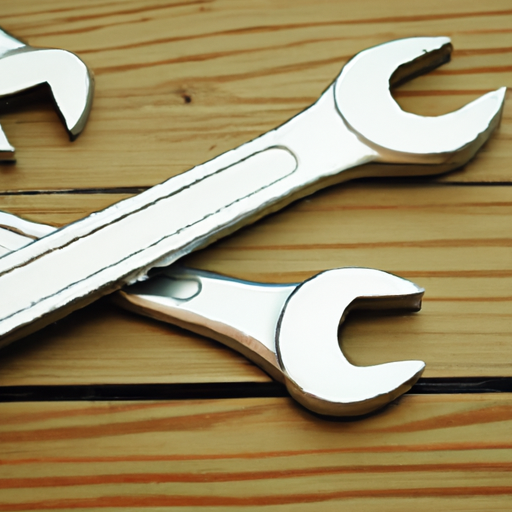
User-Friendliness
When it comes to working with tools, user-friendliness is key. A wrench that is easy to use and convenient to handle can make your work much more enjoyable and efficient.
Consider the following factors when evaluating the user-friendliness of a wrench:
Weight and Portability
The weight of a wrench can impact how comfortable it is to use, especially during extended periods.
If you anticipate using the wrench for long periods or need to carry it around frequently, opt for a lighter and more portable option.
However, keep in mind that lighter wrenches may sacrifice some durability or strength. Consider your specific needs and strike a balance between weight and performance.
Ease of Use and Accessibility
Look for wrenches that are easy to use and provide quick access to bolts and nuts. Consider the design of the wrench and how it allows for easy maneuverability in tight spaces. Wrenches with slim profiles or angled heads can enhance accessibility and make it easier to reach challenging areas.
Ultimately, choose a wrench that feels intuitive to use and allows you to work efficiently.
Additional Features
Some wrenches come equipped with additional features that can enhance their versatility and functionality. While these features may not be necessary for every user, they can be valuable additions depending on your specific needs. Here are some additional features to consider:
Quick-Release Mechanism
A quick-release mechanism allows for easy and efficient socket changes on socket wrenches. This feature eliminates the need for manually removing and attaching sockets, saving time and effort during tasks that require multiple socket sizes.
Built-in LED Light
Wrenches with built-in LED lights can be particularly useful in low-light or confined spaces. The added illumination makes it easier to see and work with precision, minimizing the risk of mistakes or accidents.
Swivel Head
A wrench with a swivel head provides increased flexibility and ease of use. The ability to rotate the head at different angles allows for better access and maneuverability in tight or awkward spaces, making it easier to apply torque.
Pivoting Handle
Some wrenches come with a pivoting handle, which allows for easier access to bolts and nuts from different angles. This feature can be particularly useful when working in tight or hard-to-reach spaces where a straight handle would impede access.
Magnetized Tip
A wrench with a magnetized tip can be beneficial when working with small bolts or accessories. The magnetized tip helps hold the fastener in place, preventing it from falling or getting lost in tight spaces.
Read User Reviews
While researching and considering the various factors mentioned above, it’s also worth reading user reviews before making a final decision. User reviews provide valuable insights into the real-world performance and durability of different wrenches. Here are a few tips for effectively reading user reviews:
Research Online Reviews
Look for reputable websites or platforms that feature detailed reviews from actual users. Pay attention to reviews that mention specific pros and cons, as well as any recurring issues or concerns. Reading multiple reviews will help you gather a more comprehensive and balanced understanding of a particular wrench’s performance and reliability.
Consider Feedback and Ratings
Pay attention to feedback from users who have similar needs or requirements as you do. If you’re a professional mechanic, look for reviews from others in the same industry. Consider the overall rating of a wrench, but also read individual reviews to understand why users have rated it as they did.
Look for wrenches that consistently receive positive feedback and have high ratings from a significant number of users.
Choosing the right wrench can make all the difference in the success and efficiency of your work. By considering factors such as the purpose of your work, the type of wrench needed, the materials and quality, ergonomics and grip, user-friendliness, and additional features, you can make an informed decision.
Don’t forget to evaluate your budget and the long-term value you will receive from your chosen wrench. By carefully considering these factors and reading user reviews, you can confidently select the wrench that best suits your needs and work requirements. Happy wrenching!









